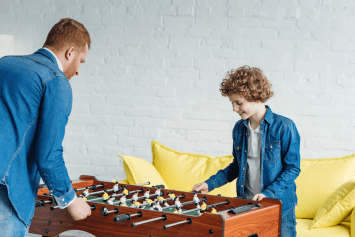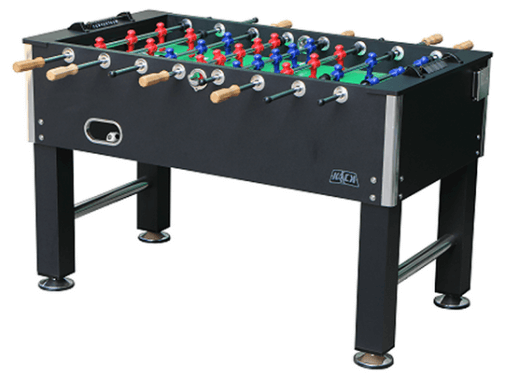Hone Your Hand-Eye Coordination Skills Playing Foosball

Also called table football, foosball is a game where hand-eye coordination matters, besides game strategy and your physical strength.
To excel at foosball, you should be able to:
- Move your hands quickly
- Closely track the ball on the playfield
- Shoot whenever the opportunity presents itself
This is why playing foosball is an effective way to get your hand-eye coordination right. Foosball entails complex movements involving simultaneous usage of your hands and eyes a lot more swiftly. Besides playing foosball every time you get the opportunity, there are certain other things you could do outside of the foosball table to enhance your hand-eye dexterity.
Enhance Your Central Vision
Playing catch with a baseball or flinging a soft ball at a wall would help boost your central vision. Central vision is an integral aspect of your vision that helps you drive, read, and see images. When your central vision is good, you are able to see colors, shapes, and details sharply and clearly. While throwing the ball at the wall, try to catch the ball with one hand after it ricochets off the wall. And repeat this alternating between your left and right hand.
Learn to Juggle
Juggling is not just for clowns. However, you may look like one when you try juggling for the first time. Juggling is a great exercise to improve your hand-eye coordination. While you juggle, your eyes would naturally focus toward the upper region where the balls criss-cross each other. Your brain would then make quick decisions and determine where your hands should move.
If you are already fairly good at juggling and you are not finding the exercise challenging enough, throw in some distractions to make things difficult. For instance, you can have a friend asking you to spell out specific words while you juggle. Turning on the television and pushing its volume to the maximum or juggling on a balancing board are some other diversions you could consider.
Jump Rope
Jumping rope is a great cardiovascular exercise. Incidentally, it also boosts your hand-eye coordination. Though jumping rope is more about your hands and feet and their synchronization, this synergy helps with your eye movements too. The exercise entails using your hands to spin the rope and employing your eyes to constantly track the rope so that you time your jump properly.
If you're new to jumping rope, you will probably find the exercise a bit difficult initially. However, things will get better as you keep trying. Once you reach a stage where you are not tripping over with the passes the rope makes, it means your visuomotor control is getting better. If you then advance to rope tricks such as cross overs, the tasks' complex nature will further enhance your hand-eye coordination.
Dribbling Ball
Dribbling a small ball can also help boost your hand-eye coordination. Use a ball that's much smaller than a regular basketball, such as a tennis ball. Dribbling small balls calls for increased hand-eye harmonization. With a basketball, dribbling is much easier and it, therefore, does not truly test your coordination skills.
Dribble with one hand and do that for a good 10 to 15 minutes. Do multiple sessions of these. Switch hands after every session.
Like pretty much every other exercise on this list, you may find the dribbling tough in the beginning if you are not used to it. However, you should quickly get the hang of things and, most importantly, will enjoy the sessions as you keep dribbling.
Play Video Games
There are pros and cons to playing video games. Depiction of violence, discouraged attention spans, etc. are some of the various sins linked with video games. With increased research, however, compelling evidence is coming out throwing light on how playing video games can also be beneficial in certain ways.
A habitual video gamer may not pick up foosball and get their hand-eye coordination right instantly. However, they would be much more adept at picking up those skills quickly. Also a 2014 study showed that hardcore video gaming is linked with increased "cortical thickness", which means greater density in certain parts of the brain.
One of those influenced parts is the left FEF (frontal eye field), which plays a major role in processing visual-motor information and making decisions on how to manage external stimuli. It also helps you efficiently figure out the kind of reaction that bests suits things happening around you. The “hand-eye coordination” term is a component of this process.
Featured Table

KICK Triumph Black
Combining high quality gaming, durability and stylish looks at a price point which won't break the bank, the 55" KICK Triumph Black is one of the best value foosball tables in the market today.
Read Table Review Check Latest Price

